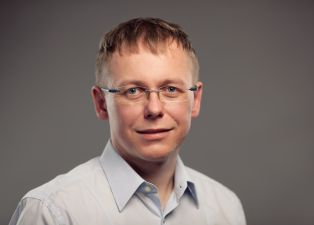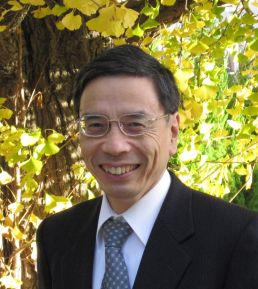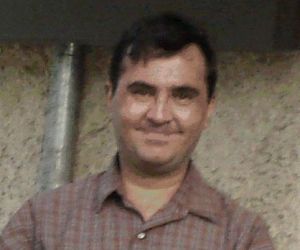
IAPR Invited Talks
May 19
Professor Tomas Pajdla (Czech Technical University in Prague)

Talk title: 3D Reconstruction from Photographs - Principles and Applications
Synopsis:
We will review and demonstrate main principles of the state of the art 3D reconstruction from photographs. Challenges and opportunities will be discussed and applications in photogrammetry, autonomous robotics and consumer cameras will be presented.
Speaker bio:
Tomas Pajdla received the MSc and PhD degrees from the Czech Technical University in Prague. He works in geometry and algebra of computer vision and robotics with emphasis on nonclassical cameras, 3D reconstruction, and industrial vision. He contributed to introducing epipolar geometry of panoramic cameras, noncentral camera models generated by linear mapping, generalized epipolar geometries, to developing solvers for minimal problems in structure from motion and to solving image matching problem. He coauthored works awarded the best paper prize at OAGM 1998 and 2013 and BMVC 2002. He is a member of the IEEE. Google Scholar: http://scholar.google.com/citations?user=gnR4zf8AAAAJ
http://cmp.felk.cvut.cz/~pajdla/pajdla.html
The pdf of the slides is available from http://cmp.felk.cvut.cz/~pajdla/mva2015/2015-Pajdla-3D-MVA-2015-05-19.pdf. We greatly appreciate the kindness of Professor Pajdla.May 20
Professor Johji Tajima (Nagoya City University)

Talk title: Color Image processing from the physical, psychological and biological viewpoints
Synopsis:
Color image processing is necessary in various academic fields, but each field approaches it differently, and often incorrectly. It should really be done in a way that is meaningful from the physical, psychological, or biological point of view. In this paper, I introduce the database SOCS, which is a tool to combine the physical and psychological view-points, and two recent researches, one on the illumination estimation relating to the physical viewpoint, and the other on the genetic polymorphism relating to the biological viewpoint.
Speaker bio:
Johji Tajima graduated from the Faculty of Science, the University of Tokyo, in 1971 and received a doctorate in 1990 from the same school. From 1971 to 2003, he was a research member of NEC Corporation, engaged in research on image processing and pattern analysis, especially color image processing. During the period, he was a guest scientist from 1979 to 1980 at Forschungsinstitut fuer Informationsverarbeitung und Mustererkennung (FIM) in Karlsruhe, the Federal Republic of Germany.
Subsequently, he has been a professor at the Graduate School of Natural Sciences, Nagoya City University, from 2003 to 2014. Now, he is a Professor Emeritus of the University.
Prof. Tajima received the best paper awards for his papers from the Institute of Image Electronics Engineers of Japan (IIEEJ) in 1990 and 1998, and the Institute of Electronics, Information and Communication Engineers (IEICE) in 1991. He also published a book "Principles of Color Image Reproduction" in 1996.
He is a fellow of IEICE and IAPR (International Association for Pattern Recognition) for his contributions on color image processing and 3D vision.
He has served as a committee member of academic organizations, including as the general chair for MVA'92 and MVA2007, as well as the program chair for MVA2000.
http://www.nsc.nagoya-cu.ac.jp/profile/tajima.html
The pdf of the slides is available from here. We are really grateful for Professor Tajima's kindness.May 21
Professor Ramin Zabih (Cornell University)

Talk title: Research Opportunities in Creating Medical Images
Synopsis:
While medical imaging researchers traditionally focus on registration or segmentation, an important challenge lies in creating high-quality diagnostic images for CT or MR. The underlying technical problem is a variant of motion deblurring, which requires a prior for solution. While good results can be achieved with widely-used first-order priors that only involve pairs of adjacent pixels, getting to the next level of performance requires patch-based priors. I will present a number of approaches to this problem, based on work my group has recently published in CVPR, ECCV, ICCV and TPAMI.
Speaker bio:
Ramin Zabih's research interests lie in computer vision and in medical imaging. He has worked on a variety of problems in early vision, including motion and stereo; many of these problems can be solved very accurately using algorithms based on graph cuts, which was given the Test of Time award at ICCV 2011 and the Koenderink prize at ECCV 2012. He served as a Program Chair for CVPR2007 and for the International Workshop on Computer Vision 2008, 2010 and 2012, and was a General Chair for CVPR 2013. He was the Editor-in-Chief of the IEEE Transactions on Pattern Analysis and Machine Intelligence from 2009 through 2012, and he now chairs the PAMI-TC, which runs vision conferences CVPR and ICCV. He also is the president of the Computer Vision Foundation, a non-profit which now co-sponsors CVPR and ICCV with the IEEE Computer Society. Since the fall of 2013 He is at CornellNYC Tech with a joint appointment in Weill Cornell Radiology. His medical work has focused on the problem of MR image reconstruction, as well as on workflow issues.

